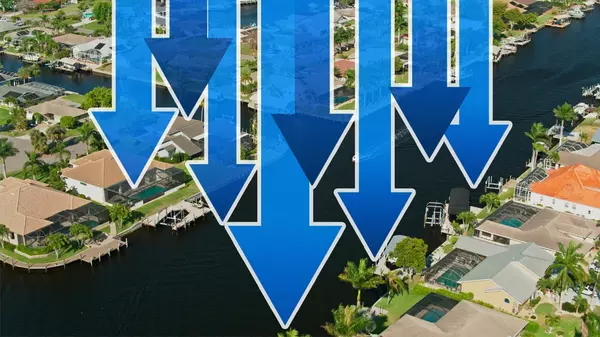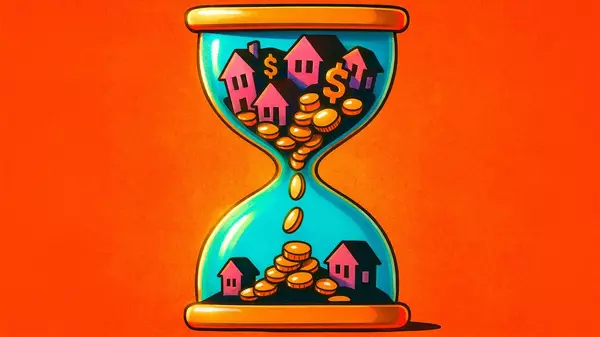Here’s The Truth About Scoring a Mortgage Rate Below 6% Right Now

"When mortgage rates fall below 6%..."
With affordability top of mind, time and again, agents and lenders are hearing that rates need to come down for buyers to come off the sidelines.
And yet, for the better part of the past year, mortgage rates have hovered around the mid-6% range. On Thursday, mortgage rates fell to their lowest level in over a year to 6.19%. Although economists with the National Association of Realtors® projected rates could dip into the “sweet spot of 6% by 2026," other economists warn that the rates will be stuck in this range for a while.
In fact, MBA's Chief Economist Mike Fratantoni presented their forecast at the Mortgage Bankers Association's annual conference in Las Vegas on Sunday, projecting that 30-year fixed mortgage rates will remain roughly in the range of 6% to 6.5% through the end of 2028.
But the truth is, there are borrowers landing rates below 6% right now. Some are even scoring mortgages in the 5% and 4% range.
Finding a mortgage with a lower interest rate isn’t really the problem—what it will cost is.
How some buyers are landing rates below 5% today
One of the creative ways to lower rates is to use a mortgage buydown.
A mortgage buydown is a financing technique that can temporarily or permanently reduce your mortgage interest rate, which in turn lowers the monthly payments on your loan.
The strategy has become increasingly popular: According to new-construction insights from Realtor.com®, the percentage of listings with a mortgage rate buydown shot up from about 1% in 2022 to nearly 6% by late 2023. By the end of 2024, that number was still above 4%.
Alana Smock, a loan officer with Elevated Mortgage in Arizona, explains she’s seeing credits in the “$15,000 to $20,000 range pretty regularly.”
“When we use those credits strategically to buy down interest rates permanently over the life of the loan, many FHA and VA buyers are landing in the [4% range], even though the national average sits above 6%,” Smock explains. “Conventional buyers are in the low 5%. So when clients ask me how to get below 6%, I tell them—it’s absolutely possible when you pair the right loan structure with strong negotiation.”
These “credits” refer to money paid upfront to “buy down” the mortgage rate. Sometimes the buyer pays, but there are also instances where your lender, homebuilder, or even seller will pay upfront.
Such was the case with a recent client of Smock’s.
“They had just relocated to Prescott from Alaska after selling their previous home. They came in with a strong financial position: an excellent credit score and a substantial down payment. Their goal was to have their new home paid off within just a couple of years, so they wanted a 15-year term.”
“Even though conventional rates were slightly higher at the time, I ran a VA loan comparison since the borrower was a veteran. The VA program allowed us to take advantage of better pricing and, thanks to their agent’s negotiation skills, we secured an $18,000 seller credit. We used that credit to permanently buy down the interest rate to 3.99%.”
The drawbacks of buydowns
If a deal like this sounds too good to be true, it usually comes with a catch, and mortgage buydowns are no exception.
Consider this: If you’re funding the buydown yourself, you’ll need enough cash upfront to make it happen, which can be tougher than it seems. And if you can afford only a temporary buydown, be prepared: Your rate will eventually reset. Most temporary buydowns are structured as a 2-1 buydown, meaning your rate drops by 2% in the first year, 1% in the second, and returns to the standard rate after that.
You’ll also want to tread carefully if someone else—like the seller or builder—is covering the buydown for you.
“On paper, lowering your monthly payment can look like a win-win,” explains Jacob Naig, a real estate investor and agent in Des Moines, IA. “But the trade-off is often hidden. Either the seller or builder is raising the listing price to offset the buydown, or the buyer ends up paying a premium upfront for temporary relief instead of lasting savings.”
Other options for a lower mortgage rate
There are three other options to score a lower mortgage rate right now, if your main objective is to keep your monthly payments low.
First is an assumable mortgage. An assumable mortgage allows a homebuyer to take over the seller’s existing mortgage—along with its terms, including the interest rate. In many cases, that rate is lower than what’s currently available on the market.
In the first quarter of 2025, 20.7% of outstanding mortgages had an interest rate below 3%, according to Realtor.com reporting. However, given that, many homeowners consider themselves “locked in” and are unwilling to part with their home.
Next, you could consider an adjustable-rate mortgage, or ARM. The biggest benefit of an ARM is that it starts at a fixed, predetermined interest rate—likely lower than what you would get with a comparable fixed-rate mortgage. The biggest drawback? The rate adjusts after a specified initial period—usually three, five, seven, or 10 years—based on market indexes. If those indexes go up, your payment will go up, too—sometimes way up!
Finally, a 15-year mortgage will give you a lower interest rate than a 30-year, but as Smock points out, it’s not for everyone.
“A 15-year mortgage is a great tool, but it’s really designed for a specific type of borrower,” she says. “Typically, someone with a strong income, low debt, and a clear goal to pay off their home quickly. Not everyone can or should stretch to meet that higher monthly payment, and that’s OK.”
If you’re considering any of these options, make sure you’re having thoughtful conversations with your lender and real estate agent before proceeding.
“I work with an amazing group of Realtors here at The HYLAND Group who fiercely advocate for their buyers,” Smock adds. “They’re negotiating real value that turns this higher-rate market into an opportunity. It’s not just about waiting for rates to drop—it’s about creating affordability today.”
Categories
Recent Posts









"My job is to find and attract mastery-based agents to the office, protect the culture, and make sure everyone is happy! "
